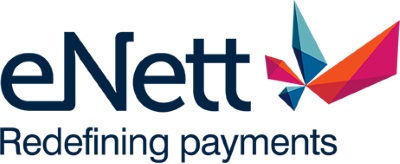
Fake hotels: the new weapon of choice for fraudsters
By cameron in Uncategorized
Sponsored by eNett International
Travel fraud is escalating at an unprecedented rate. In 2017 alone 4,700 travelers were impacted by fraud. The new findings from ABTA, the City of London Police and Get Safe Online also revealed accommodation booking to be one of the main types of travel fraud.
In many cases, the fraud was related to fake hotels – a scam in which a fraudster will list a fake hotel and then use stolen credit cards to make a booking via the online travel agent’s (OTA) website. The OTA will then receive chargebacks for bookings after making a payment to the fake hotel. By this point, the fraudster will have withdrawn all the funds paid by the OTA and won’t respond to any contact attempts, leaving the OTA with a financial loss.
This phenomenon is leaving both consumers and online travel agents (OTAs) frustrated and out of pocket. And the criminals are becoming more sophisticated and believable too. In recent months, the travel industry has witnessed an avalanche of fake chalet websites, with consumer press identifying how some criminal enterprises have conned unsuspecting holiday-makers out of tens of thousands of euros.
Another rising accommodation booking scam is ‘inflated room prices’, with instances of room prices being inflated dramatically followed by a spike in booking volume. This indicates collusion between a hotel and a fraudster. When hotels raise the cost of their rooms, fraudsters will use stolen card details to book rooms via an OTA. When the OTA receives chargebacks, the hotel can provide guest documentation that relinquishes responsibility of them being debited for the fraud. The result? The OTA takes the hit and the hotel and fraudsters split the winnings.
Combating accommodation booking fraud
Travel and tourism now accounts for 10.2 per cent of global GDP and continues to grow as prices reduce and online brands make it easier for consumers to spend. And, with hotel revPAR in Europe increasing 6% in 2017 compared to 2016, accommodation booking is a natural breeding ground for cybercriminals.
Our new research, It Pays to Know, reveals that fraud is now costing travel intermediaries a whopping $21 billion each year. The rise of fake hotels and inflated room prices must be taken seriously.
There is some straightforward best practice advice that, if followed correctly, could limit OTA’s exposure to accommodation booking fraud. This can be as simple as educating employees to recognise the warning signs of dodgy customers. Or it might be ensuring your company’s payment solutions are up to date and offer protection and recovery mechanisms.
Virtual cards generally allow controls to be set that significantly decrease the risk of fraud, and they also help recover from it too. For example, Virtual Account Numbers (VANs) allow users to define booking and payment parameters, minimising the risk of fraud when paying travel suppliers. It also offers sophisticated chargeback capabilities, meaning funds may be recovered should fraud occur.
There’s no getting away from the fact that fraud in the travel industry will continue to surge, with fraudsters becoming more creative in how they con consumers and OTAs. However, being aware of the signs for new types of fraud, and following simple steps to protect your business, will put you in the best position to reduce incidents and impact.
To learn more about how to better control fraud and lower the potential impact on profits, download our Fraud in travel payments report.

This article from Anthony Hynes, managing director and CEO of eNett International, appears as part of the tnooz sponsored content initiative.
Photo by Markus Spiske on Unsplash
![]()

